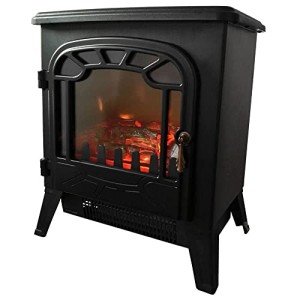The Fireplace: A Warm Embrace of Tradition and Comfort
Fireplaces have been an essential part of human habitation for centuries, functioning as a source of heat, an event location, and a sign of convenience. While the modern variations might differ extremely from their ancient forefathers, the allure of a fireplace withstands. This post checks out the numerous aspects of fireplaces, including their history, function, types, and upkeep, while also resolving frequently asked questions.
The Evolution of Fireplaces
Fireplaces date back to ancient times when open flames were utilized for cooking, heating, and defense from wildlife. Over the centuries, fireplaces developed from simple fire pits to the sophisticated performances we see today. Here is a brief timeline of their advancement:
- Prehistoric Era: Cavemen utilized open flames for warmth and cooking. Wind and smoke typically blew into dwellings.
- Middle Ages: Stone and brick fireplaces ended up being typical in homes and castles, including chimneys to carry smoke outside.
- Renaissance: Elaborately developed mantels emerged, and fireplaces ended up being centers of social interaction.
- Industrial Revolution: Innovations in heating materials caused a range of styles and functionalities.
- Modern Era: The introduction of natural gas, electric, and bioethanol fireplaces provided cleaner options to traditional wood-burning systems.
Table 1: The Evolution of Fireplaces
| Period | Characteristics |
|---|---|
| Ancient Era | Open flames for heat and cooking |
| Middle Ages | Stone and brick structures with early chimneys |
| Renaissance | Ornate mantels, social centers |
| Industrial Revolution | Varied styles, development of brand-new materials |
| Modern Era | Gas, electric, and bioethanol alternatives |
The Purpose of a Fireplace
Fireplaces serve double purposes: they offer physical heat and produce an emotional environment. Property owners frequently gather around the fireplace to bond, share stories, and enjoy a cozy setting. The radiance of a fire can be calming, adding to a sense of relaxation and intimacy. Beyond personal enjoyment, fireplaces also offer functional advantages, consisting of:
- Home Heating: Effective heat source, especially in chillier environments.
- Increased Home Value: A well-designed fireplace can improve the aesthetic worth of a home.
- Emergency situation Heating: In case of power outages, wood-burning fireplaces can function as an important heat source.
- Aesthetic Appeal: A centerpiece that contributes to interior decor.
Kinds of Fireplaces
Today, fireplaces can be found in various styles and fuel types, accommodating a diverse variety of choices and settings. Here are some typical types:
Wood-Burning Fireplaces:
- Traditional fire pits
- Traditional masonry fireplaces
- Need significant upkeep and chimney upkeep
Gas Fireplaces:
- Available in both direct vent and ventless ranges
- Easier to use and keep than wood-burning fireplaces
- Supply instant heat with a flick of a switch
Electric Fireplaces:
- Offer associated heat sources without genuine flames
- Often created to simulate traditional fireplaces
- Perfect for smaller sized areas and homes without a chimney
Bioethanol Fireplaces:
- Use bioethanol fuel, supplying a sustainable option
- Need no ventilation and can be placed anywhere
- Safe and simple to maintain
Table 2: Types of Fireplaces
| Type | Fuel Source | Functions | Upkeep Requirements |
|---|---|---|---|
| Wood-Burning | Wood | High atmosphere, heat source | Regular chimney cleansing |
| Gas | Natural gas or gas | Instantaneous heat | Very little, periodic maintenance |
| Electric | Electricity | Easy setup | Extremely low upkeep |
| Bioethanol | Bioethanol fuel | Ventless, portable | Low, primarily cleaning |
Maintenance and Safety Considerations
Owning a fireplace involves particular obligations, especially concerning its safe operation and long-lasting maintenance. Here are necessary upkeep tips and safety guidelines:
Maintenance Tips:
- Annual Inspection: Always have your chimney and fireplace checked at least as soon as a year by a qualified service technician.
- Routine Cleaning: Clean out ashes and particles after each use, and make sure the flue is open before beginning a fire.
- Look for Cracks: Inspect masonry for cracks or damage to avoid structural problems.
- Use Proper Fuel: Only use dry, experienced wood for wood-burning fireplaces; do not burn treated wood.
Safety Guidelines:
- Install Smoke Detectors: Ensure smoke detectors are functional, checking them regular monthly and replacing batteries as required.
- Keep a Fire Extinguisher: Have one neighboring, even if a fireplace is used rarely.
- Monitor Flames: Never leave a fire unattended, and ensure kids and pets are kept track of around the fireplace.
Regularly Asked Questions (FAQs)
1. How can I lower smoke from a wood-burning fireplace?
To minimize smoke, usage dry, experienced wood, and ensure that your chimney is tidy and unobstructed.
2. Is address here to utilize gas fireplaces during a gas leakage?
Never utilize a gas fireplace during a gas leak. Right away leave the area and contact gas services for help.
3. Can I install an electric fireplace myself?
Electric fireplaces are usually easy to install, however it is recommended to seek advice from professionals to ensure security and compliance with regional building regulations.
4. What is the best kind of fireplace for small spaces?
Electric fireplaces or bioethanol models are frequently best for small spaces, as they do not need comprehensive ventilation or structural modifications.
Fireplaces have actually transcended their initial purpose of providing heat to end up being valued components of home style and domesticity. They evoke memories of warmth, celebrations, and togetherness while offering functional benefits that improve modern living. By understanding the numerous types of fireplaces, their upkeep, and security practices, homeowners can enjoy the classic appeal of this precious function for generations to come.

